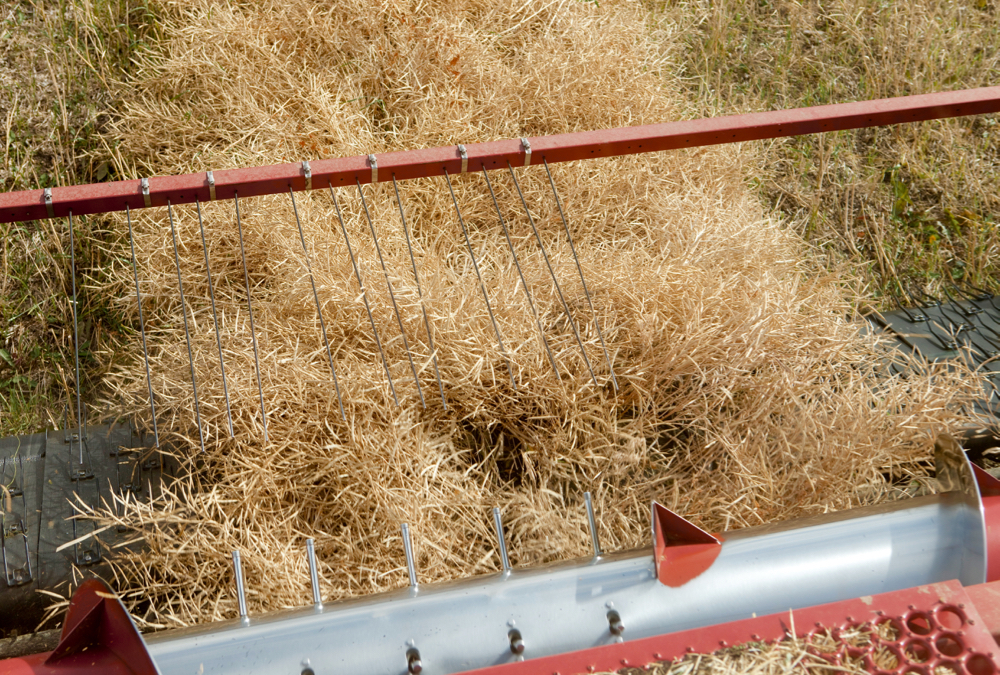CNS Canada — A projected decrease in Canadian malt barley acreage in 2014 could lead to price increases by the spring of 2015, according to an analyst in Alberta.
Darren Smith of RMI Analytics in Calgary said exports in the barley market have been fairly light recently, due to logistics problems gripping rail transportation — but he sees good things on the horizon.
The expected carryout for the start of the agricultural year on Aug. 1 is projected to be two million tonnes, up from 800,000 at the end of last year.
Read Also

Alberta harvest wrapping up: report
Harvest operations advanced to 96 per cent complete in Alberta as of Oct. 7, with only a few late-seeded cereal and canola fields remaining, according to the latest provincial crop report.
“With the high carryout, I think we’ll see fairly low pricing in the fall, and then I think as we start to see the barley supply over the year tighten up a bit, I anticipate that because we’re going to have a smaller crop, I see pricing starting to migrate up going into the spring of 2015.”
Right now there are better returns in wheat and canola than in barley, he noted, citing some malt barley contracts in 2014 that range from $200 to $230 per tonne to the farm.
“That’s where the drop in acres begins,” he said, adding there is still going to be a fairly significant amount of old-crop barley available for next year.
According to the latest intentions report from Statistics Canada, 6.3 million acres of barley are expected to be seeded in 2014 compared to nearly 7.1 million acres last year, a decline of 10.9 per cent.
Current industry projections call for an eight million-tonne barley crop, down from last year’s 10.2 million-tonne crop, said Smith. Yields, however, aren’t expected to match last year’s levels.
“I would say last year we had really ideal conditions for yields per acre,” he said.
Fortunately, Smith said, better-yielding varieties of malt barley are coming on, namely Meredith and Bentley. Both could be bigger yielders than Metcalfe and help the 2014 crop rise above the five-year average.
Still, he acknowledges, it won’t likely match last year’s record harvest.
“You got to assume we’re going to come back down a bit, but we’re not going to go down to the five-year average.”
There are also external factors to consider. “The big impact that’s really sitting out there on the horizon is the potential El Nino conditions,” he said.
“Need a decent fall”
As the Pacific Ocean warms, the main focus will be on the Australian market, and in particular, the eastern region of the country, he said. That area is usually fairly dry, and its growing times will likely coincide with the onset of El Nino during the summer.
“Our summer and fall is when it will happen,” said Smith.
Canada could also be affected, depending on when the height of El Nino is felt. Cold soil temperatures are still reported in various regions of the Prairies and a dry summer could decrease yields.
“If El Nino conditions persist closer to the fall, it’s probably a positive thing because when I look out my window I see snow. The crop’s probably not going to get in early so we need a decent fall to get good malting barley off.”
The lateness of the season could also act as a draw for some producers who aren’t sure which crops to put in. Barley is a low-input-cost crop, Smith said, so if producers are feeling the pinch from the late spring they may decide on a crop that doesn’t cost as much money.
Barley also does well in a short growing season, he added. “So if you get into late May or early June for planting you can push more acres towards barley.”
If that happens, he said, the expected decrease in barley acres may not be as acute as first thought.
With demand for malt barley holding steady in both Canada and the U.S., Smith isn’t sure how much will be left over at the end of the year for exports overseas.
However, Argentina is said to be pushing more acres toward wheat than barley this year, which could lower competing volumes.
— Dave Sims writes for Commodity News Service Canada, a Winnipeg company specializing in grain and commodity market reporting.















